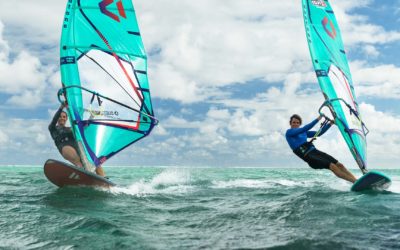Of the Canary Islands, Fuerteventura is probably the most suitable for kitesurfing thanks to a large number of varied spots, perfectly exposed to the north/north-easterly wind blowing most of the year, and so sweeping the coast from north to south on the eastern part of the island.
The rocky spots to the north and north-west offer incredible conditions for experts and wave enthusiasts. From north-east to south-east the beautiful and long sandy beaches of Corralejo (with a bit of pebble), or Risco del Paso via Sotavento, are an ideal playground for all kitesurfing levels, softer waves or flat water, anything is possible!
A volcanic island stretching some 100 kilometers from north to south, Fuerteventura will impress you with the beauty of her sandy beaches and her wild side as you stroll along the cliffs. Thanks to the surreal scenery, riding here becomes a never-ending pleasure.
The best kitesurfing spots in Fuerteventura
Northern Fuerteventura:
The best known area for kitesurfing in the north of the island is the town of Corralejo and surrounding spots on the northeast coast. Flag Beach, opposite the island of Lobos, is the ideal spot for riders of all levels. With a prevailing side-shore wind, freeride conditions and waves are often the order of the day on Corralejo’s beaches. Be careful at low tide, however, as the volcanic rocks can be seen at the surface of the water and can be very sharp, so booties are recommended.
Just north of Flag Beach, the Rocky Point spot is also accessible, but only for experienced kitesurfers. It operates mainly at high tide, when waves form with the wind and the north/north-westerly swell. Another wave spot near Corralejo is Glass Beach, located south of Flag Beach. Here, the kiteboarding level goes up a notch, as the wave rolls directly onto a slab and breaks faster.
Even further north of Fuerteventura is Majanicho, a must for wave riders, which operates for most of the year. The waves are very often straight, and the best orientation for surfing is an easterly or northeasterly wind.
For even more intense sensations and maximum adrenalin, head for the wild coast to the northwest. Here you will discover the world-famous El Cotillo wave spot, bearing the same name as its authentic village. Close to Castillo beach, you will need to launch quickly to avoid shorebreak. We recommend sailing at low tide with a north/north-easterly wind and a north/north-westerly swell. This is a spot reserved for kitesurfers used to surfing or riding in swells. However, a small lagoon is created according to the tides, and kitesurfing here is sometimes safe. After the session, treat yourself to a meal in one of the local restaurants, a must for seafood and fresh fish!
Although the north and northwest of Fuerteventura are a real paradise for kiters, do nott try to get into the water if you are unsure that you are up to it. It is true that wave spots are plentiful in the north of Fuerteventura, but concentrate on Flag Beach before throwing yourself on the island’s wave spots.
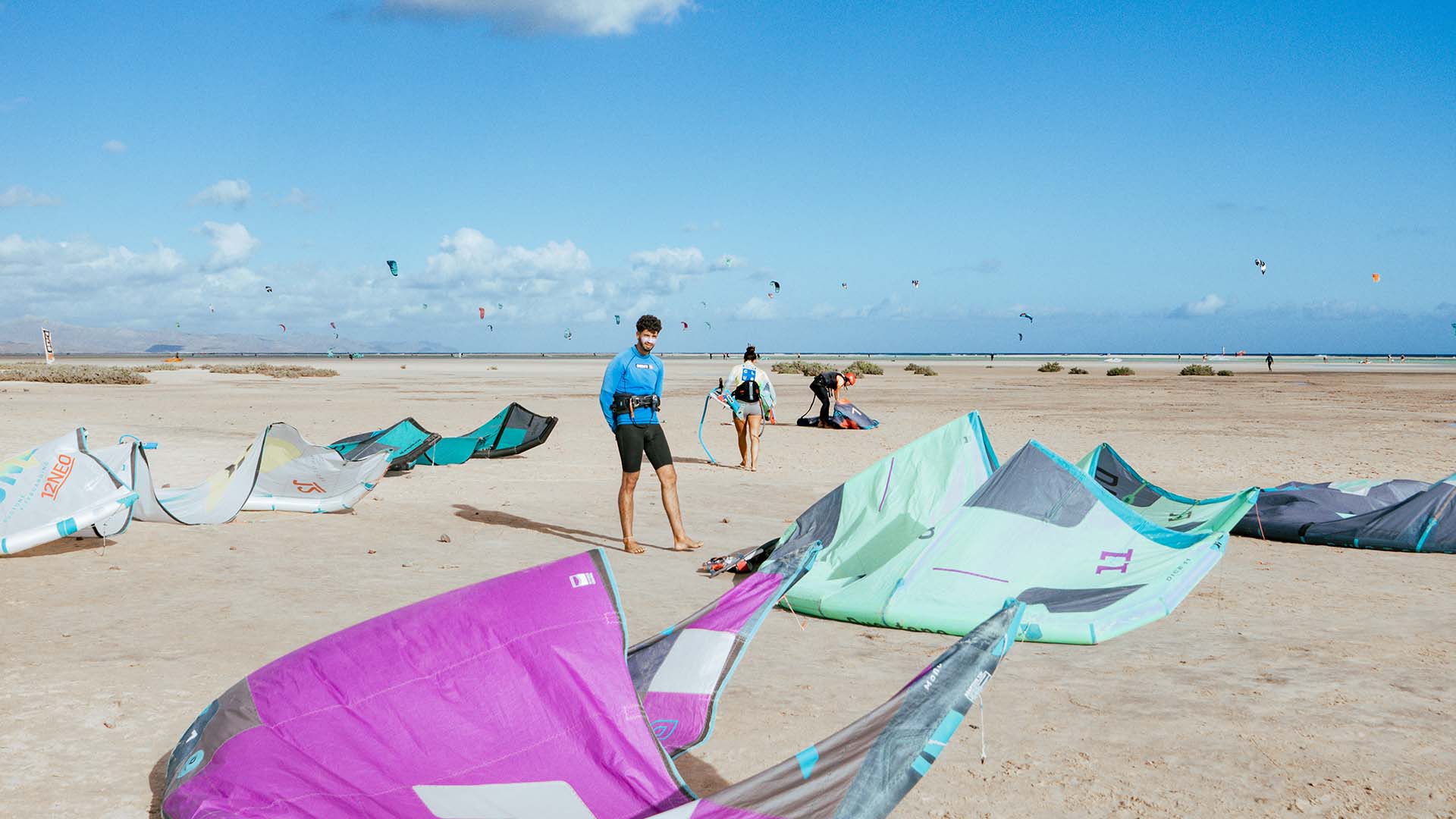
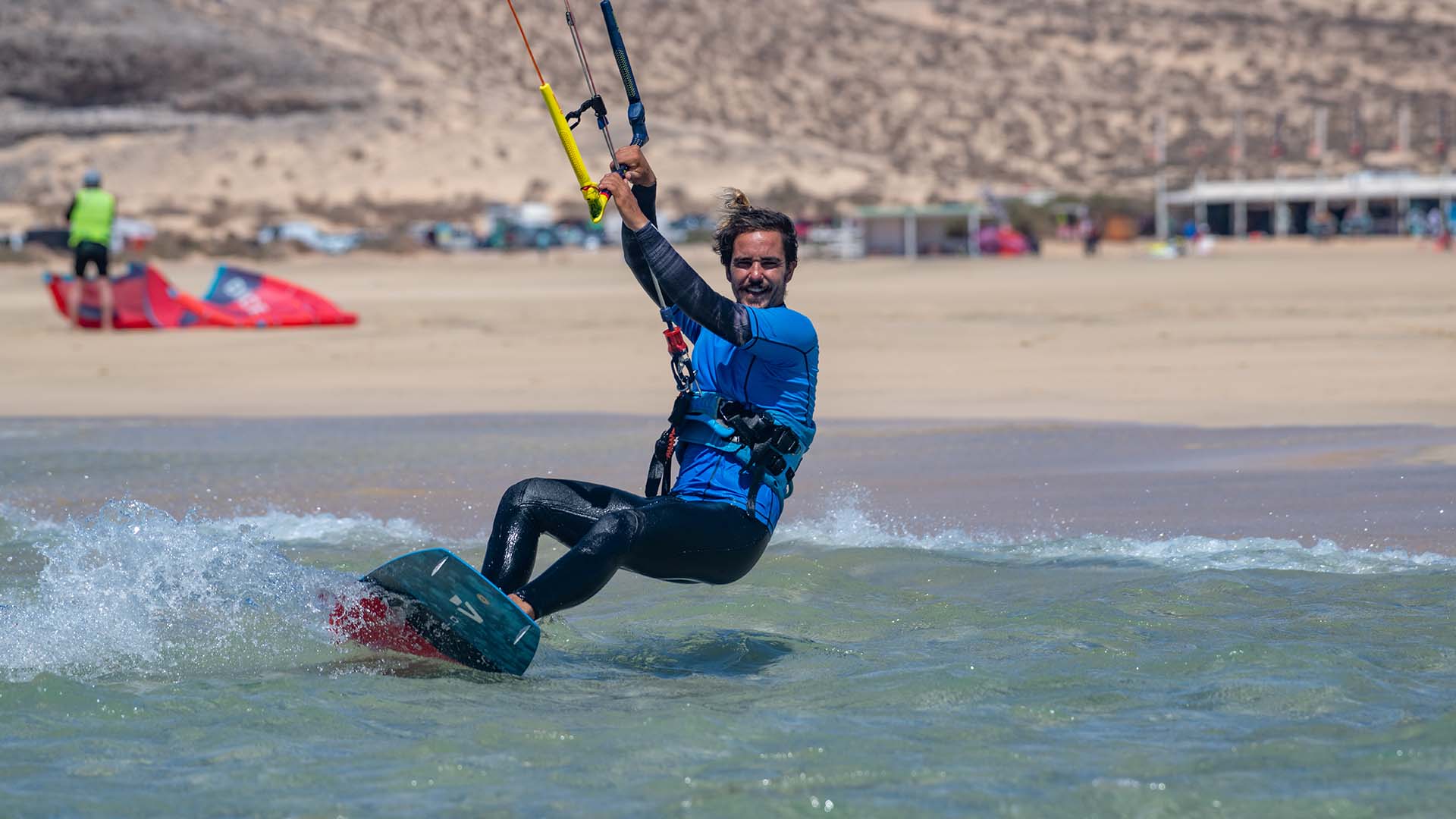
Southern Fuerteventura:
To the very south of Fuerteventura, around 1h30 by car from Corralejo and 1h from the airport, are other magnificent beaches, mostly of white sand. In fact, the ION CLUB Risco del Paso center has been established on the Risco del Paso beach for many years, practically with its feet in the water, which is no coincidence! If you are looking for flat, sometimes choppy water, and shallow water when the lagoon is full, then this is the place to come to make the most of your kitesurfing holiday. The beach is isolated, with no large buildings around the kite zone, which explains the steady prevailing north-easterly wind. Situated on a fine sandy beach, the Risco del Paso kitesurfing spot is very easy to access, allowing beginners and intermediates to progress at their own pace. Depending on the tides, a lagoon forms, making the spot a true paradise, one of Fuerteventura’s best spots for kitesurfing. With regular good wind and pleasant temperatures, it is possible to ride there almost all year round.
Just a few kilometers further north of Risco del Paso, the Sotavento spot also offers excellent conditions for kitesurfing, but with a much larger number of kitesurfers. The kitesurfing beach is located 3km south of the town of Costa Calma and in front of two hotels, so the wind is less regular, although perfect for beginners and freestylers. In Fuerteventura, Sotavento owes its fame to the windsurfing world cup, where an event has been organized every summer for over twenty years.
When to go on a kitesurfing trip to Fuerteventura?
With wind often on the agenda and pleasant temperatures on the island (air between 18 and 30° and water between 17 and 23°), Fuerteventura enjoys an advantageous year-round climate, a good reason to kitesurf in all four seasons … although the best period is from June to September inclusive. That is why so many kitesurfers like to come and make it their annual rendezvous for a kitesurfing holiday, whether alone, with family, as a couple or with friends.
In summer the wind can be quite strong and the waves smaller. Imagine around 20 knots in the morning, then accelerating to 35 knots in the afternoon. In spring and autumn, the wind weakens, but doesn’t disappear for too long. Finally, in winter, the wind and temperatures drop slightly, and the waves get bigger.
For kitesurfing in Fuerteventura, we recommend wearing a minimum 3/2mm full-body neoprene wetsuit in winter, while a shorty may suffice in summer (except for the coldest days).
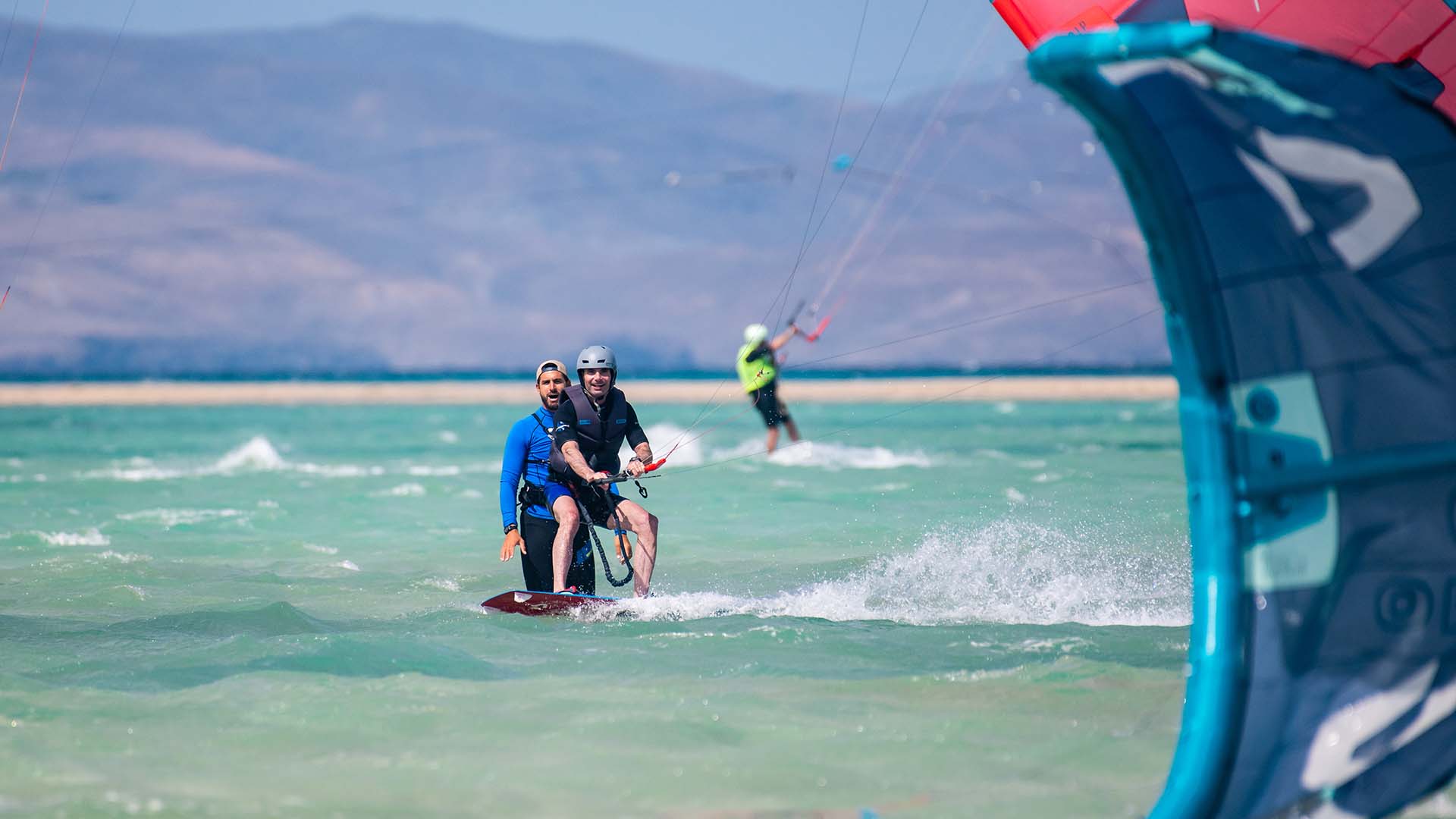
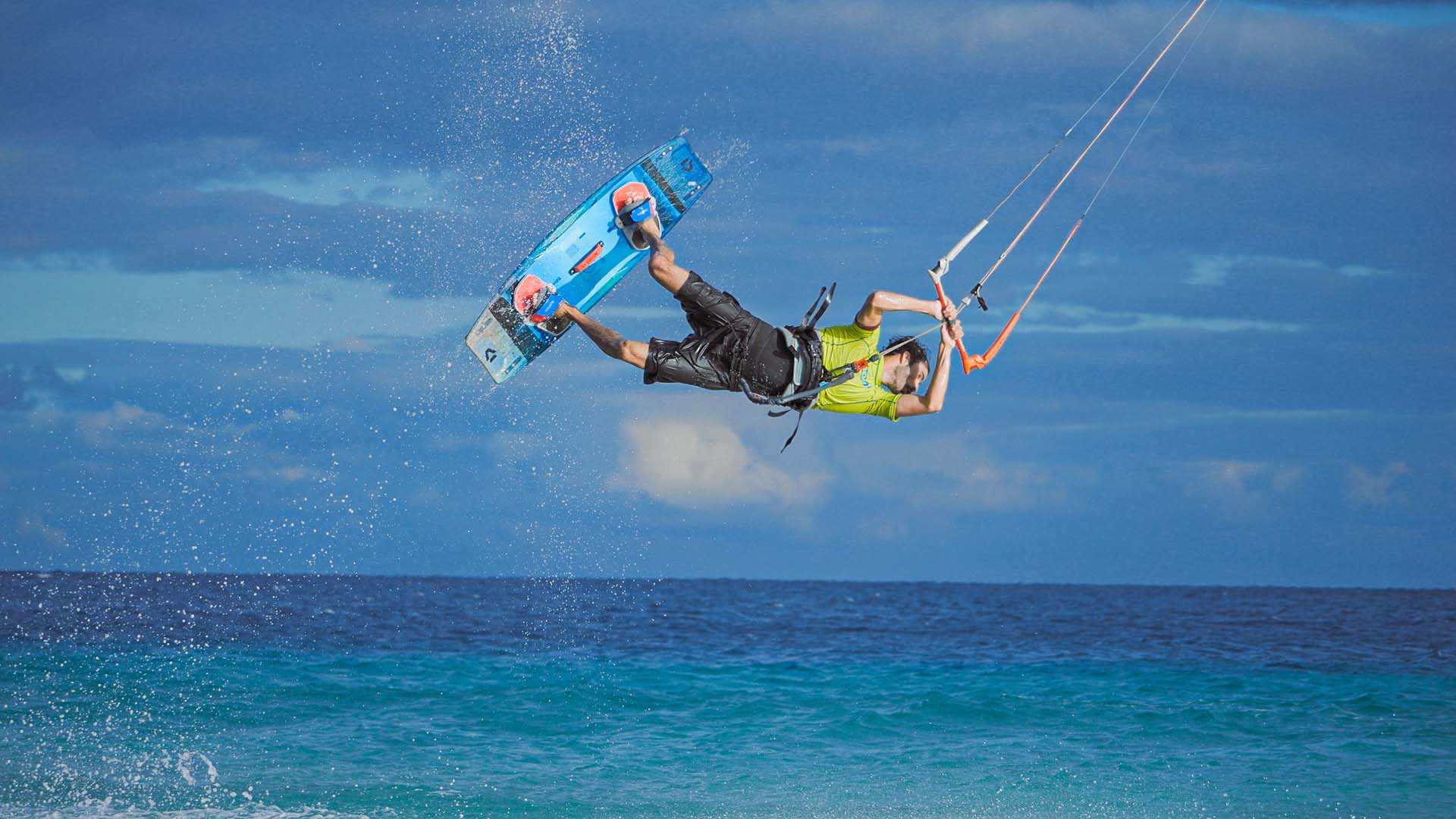
What level of kitesurfing is required in Fuerteventura?
Bordered by the Atlantic Ocean as far as the eye can see, Fuerteventura unveils a multitude of kitesurfing spots, whether wave, freeride, freestyle or flat water for beginners and intermediate levels. The best conditions are in place for all types of riders to enjoy one of the best kitesurfing holidays of their lives.
Kitesurfers with a taste for consistent swell will opt for the north of the island, in autumn or even winter, when they can explore the best Canarian wave spots. As for those who prefer long, fast tacks or big jumps, we advise them to come between late spring and late summer, as the wind blows very strongly, and this is certainly one of the best times to kite in Fuerteventura to be sure of riding every day or almost every day, mainly in the south of the island. Finally, less advanced kiters, or beginners, can kite all year round, but only in suitable areas such as the lagoons of Sotavento and Risco del Paso, or on the ocean as long as they are supervised.
Which kite to choose for a kite trip to Fuerteventura?
Before packing your bags, it’s essential to know which kite you are going to use during your trip to Fuerteventura. This will depend partly on the season, and partly on the weather forecast the day before you leave.
Summer is the best season, the windiest, and your quiver should contain your smallest kites, between 5 and 10m², as opposed to winter when it is wiser to opt for surfaces ranging from 7 to 15m². As for spring and autumn, kites between 7m² and 12m² are recommended. However, the choice of kites also depends on your level and weight.
If you have got room, having two or even three kites in your luggage will enable you to cope with all weather conditions.

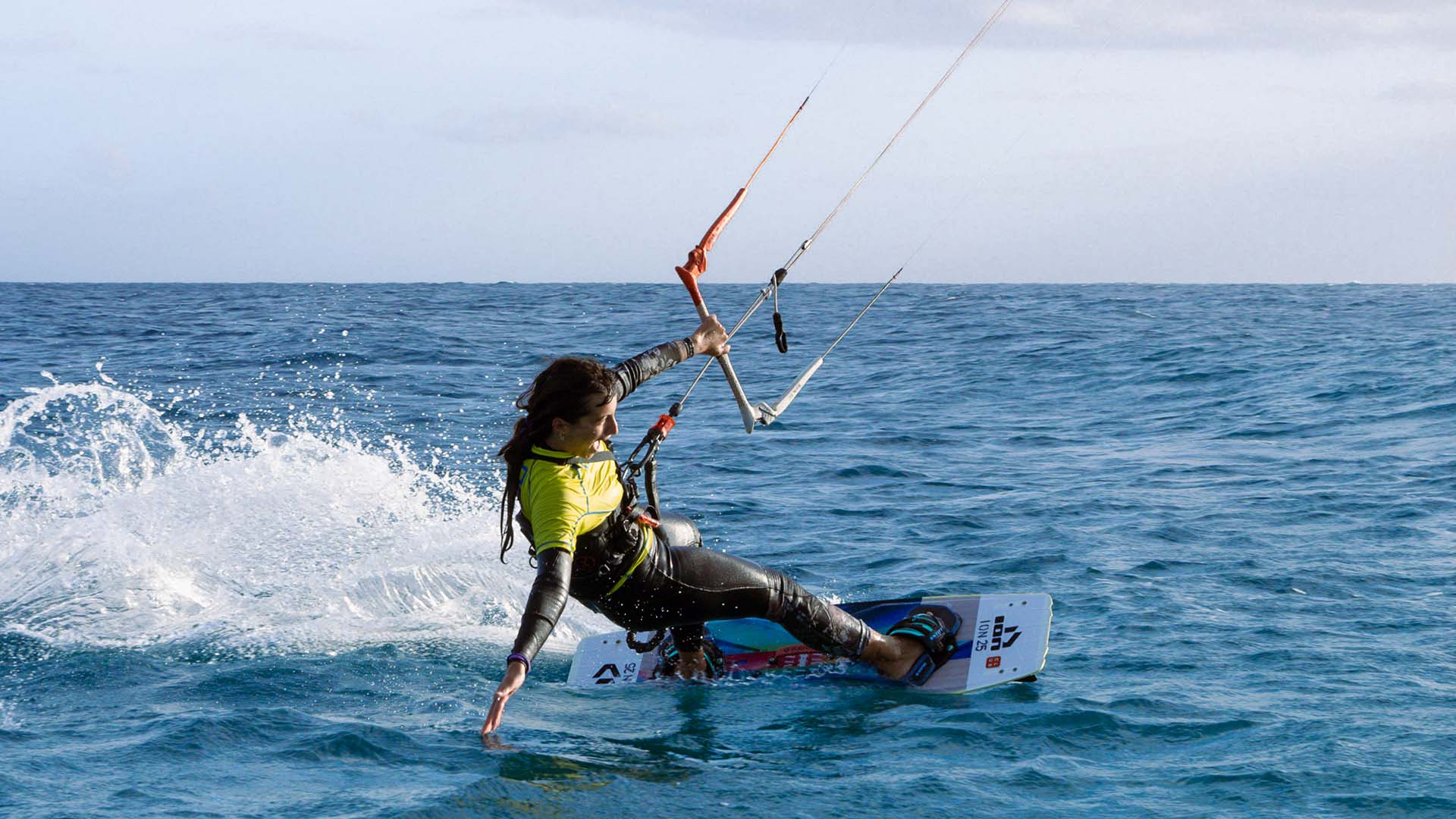
Kite in Fuerteventura travel tips
Fuerteventura is the Canaries’ most famous kitesurfing island, attracting more and more experienced riders and complete novices to the sport every year.
Today, it is easy to get to the island with just an up-to-date identity card, as the Canaries are part of Spain. There are several direct flights all year round, from France and other European countries, with a journey time of around 4 hours.
Renting a car from Puerto del Rosario airport, in the north of the island, is the best way to reach the kitesurfing spots. Finally, the island has a wide choice of accommodation, both apartments and hotels, throughout the territory, and evenings can be lively if you have any energy left after the day’s session(s).
In addition to the excellent conditions for kitesurfing, Fuerteventura is an island that exudes tranquility and a gentle way of life, which is why you should go there at least once in your life … just read the kite reviews described by those who know it best!
HOW TO PREVENT COMMON INJURIES IN KITESURFING AND WINDSURFING
HOW TO PREVENT COMMON INJURIES IN KITESURFING AND WINDSURFINGKitesurfing and windsurfing are thrilling water sports, but they’re not risk-free. Poor posture, skipping warm-ups, improper movements, or beginner mistakes can quickly lead to muscle, joint, or accidental...
HOW TO IMPROVE YOUR WINDSURFING SPEED: INTERMEDIATE TECHNIQUES
HOW TO IMPROVE YOUR WINDSURFING SPEED: INTERMEDIATE TECHNIQUESYou've already got the basics of windsurfing down, but now you want more speed, more glide, and smoother sessions? Improving your speed means mastering a mix of posture, gear tuning, and board control. The...
PROGRESS IN WINDSURFING WITH LIGHT WIND: THE ION CLUB GUIDE
PROGRESS IN WINDSURFING WITH LIGHT WIND: THE ION CLUB GUIDEWho said windsurfing in light wind is boring? Quite the opposite! These conditions are perfect to refine your maneuvers, work on your transitions, and improve your technique without pressure. It’s also the...


